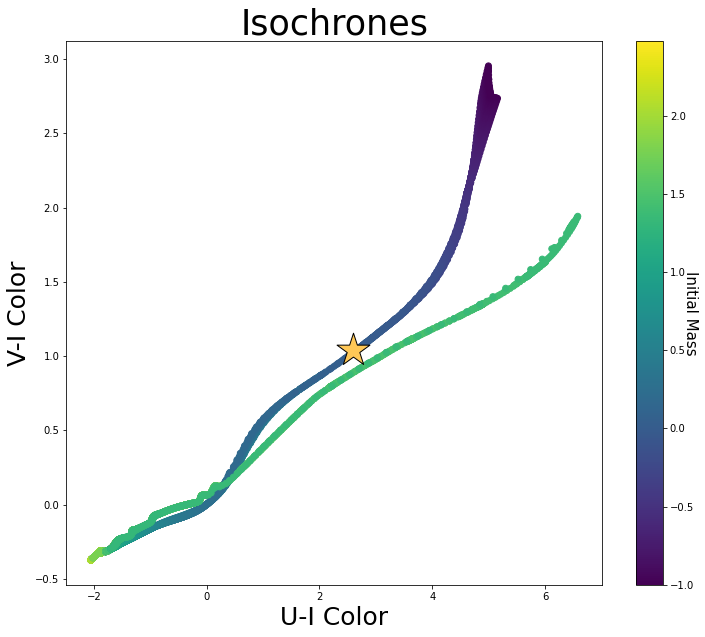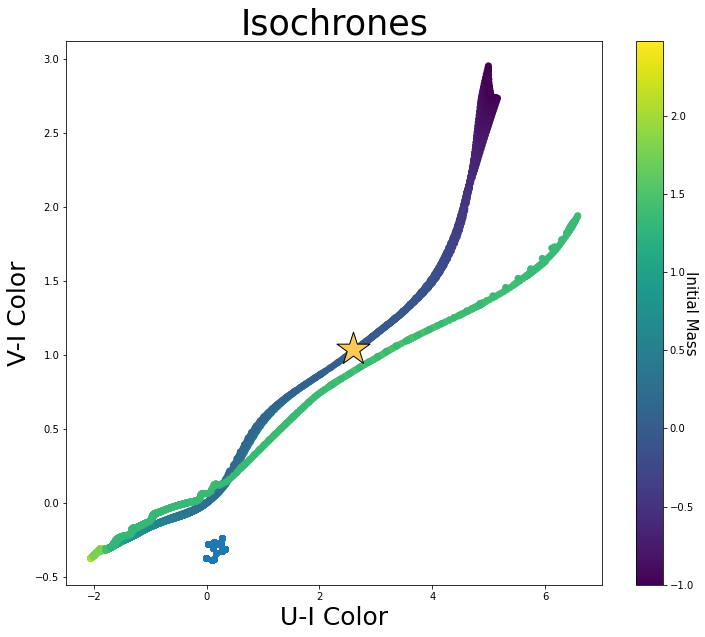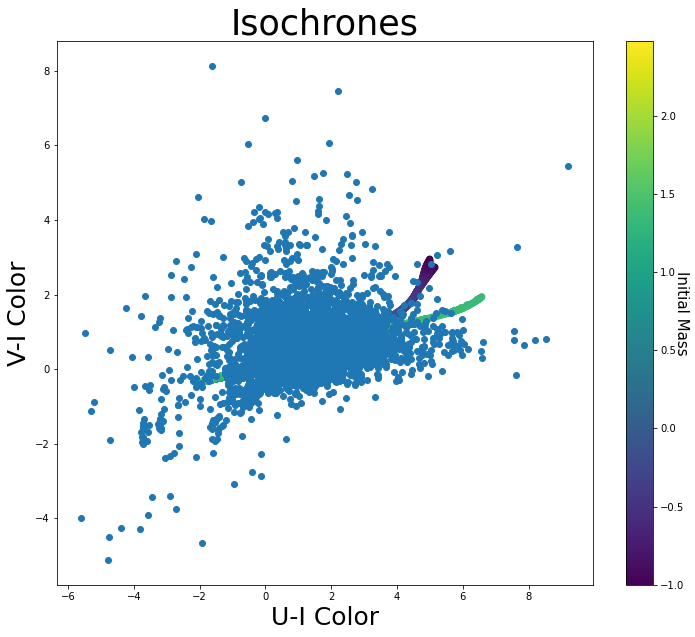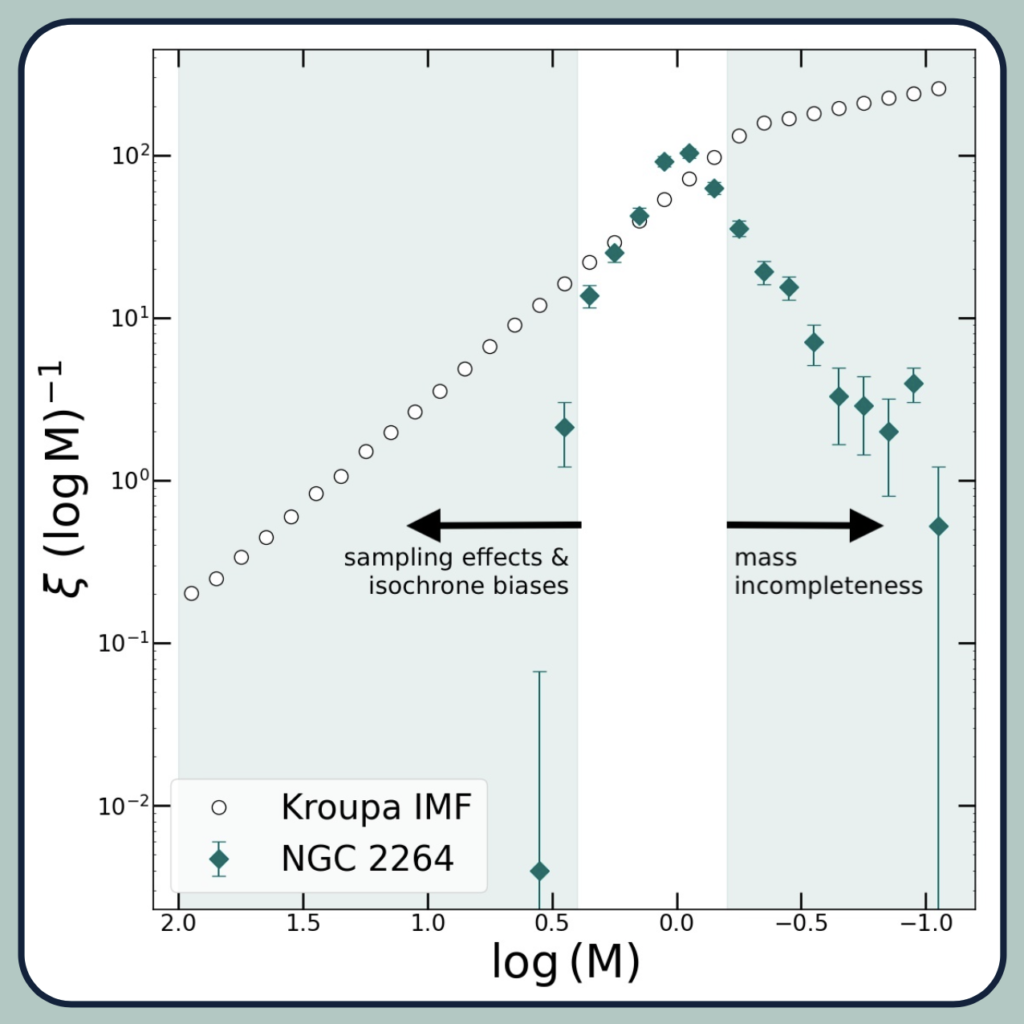What I worked On This Week
I’m so excited to talk about this past week! It was a ton of fun and I feel like so much of the class finally came together in a clear and pointed way. I think by synthesizing our project and covering it so many times, I was able to finally iron out the last few areas of confusion or concern that I had. By the time we got to the poster session, I felt proud of the work we had done and confident in my ability to present our findings. Speaking of our findings…
Our findings! (i.e. what we spent most of this week trying to make accurate and look nice)
This project came together extremely well over the second half of last week. Meredith put a lot of time into the poster, while Cat and I spend a handful of days writing code from the moment we woke up till the moment our heads hit our respective pillows. But the work was fun and the results were numerous. The last push began with my reduction of the standard stars and calculation of zero points. Unfortunately, Cat’s and my code were both build with the assumption that no ‘-‘ characters would be in the name of the objects we were attempting to reduce. I can’t really overstate this fact. It broke all and I mean all of our data reduction code. While I rewrote all of my string logic, Cat worked on improving the detail of her pipeline with the hope of improving the accuracy of our cluster photometry. With our zero points, we proceeded to the actual calibration of our cluster.
I’ll skip over a bit of the grueling details in what we did on Thursday and Friday to actually get the necessary mass estimates, but suffice it to say that we zero pointed one of our more consistent stars using our standards, and then zero pointed the entire cluster from those points to generate accurate apparent magnitudes. We then proceeded to very carefully make a lot of mistakes. Well mostly I made mistakes. To be fair, I was the one writing all the new data processing code while everyone else was either plotting or improving their pipelines.
Anywayyy, once we had accurate apparent photometric data, for each star in the cluster I calculated the two colors we had identified to be the most reliable and informative and fit them to a table of MIST isochrones. We were then left with a mass estimate for every star in our cluster. After a few identifications of systematic errors I was making, as well as the realization that some of the isochrone fitting code needed to be weighted and reworked, we had our masses. (It may go without saying, but a huge thank you to Cat throughout this whole process. She both actively identified errors and rubber-ducked me through the moments I was so lost in my own code I could barely see the sun.) I then passed the masses off to Meredith where some black-box magic occurred, leaving us with a beautiful plot of NGC 2264’s IMF.
Actual results




The results from our investigation, shown above, were actually quite surprising and very exciting. We were all blown away after finding the last systematic that allowed many of our zero-pointed results to land within a tenth or sometimes within a hundredth of the given photometrix measurements.
FCAD Poster Presentation
What went well? What could have been improved?
I thought the entire presentation went well. We knew our project inside and out and were able to explain it quite well to everyone who was interested. I was so happy with Cat and Meredith — they both did a wonderful job. I don’t think I could have chosen better partners. As far as improvements, I think it would have been nice to present at some other time than during dinner, since it would have given us all a chance to eat and to present for the entirety of the allotted time.
What feedback did we get?
We got a ton of general positive feedback on the project, ranging from the casual interested observer to a few professers who seemed at least somewhat impressed by our results. I heard afterwards that a couple professors had given some detialed ideas as to how we could improve upon our pipeline and results in the next few weeks, but as I was on my dinner shift during that time, I missed out on some of this feedback. As it has been indirectly conveyed to me since then, examining multiplicity is probably our next step in increasing the accuracy of the high mass region of our IMF.
What did we learn?
I learned a ton about presenting and about research in general. It was fun to see so many thesis talks in such a short time span, and I very much appreciated the chance to be present at such an event. I also learned a lot about galaxies and large scale experimental research outside of the realm of planetary and stellar astrophysics, which was somewhat of a first for me. It was really great to hear what cutting-edge undergraduate research looks like in those fields.